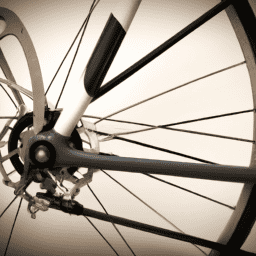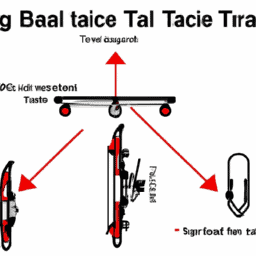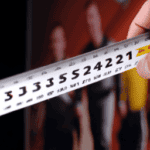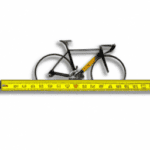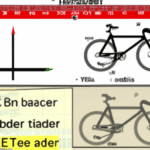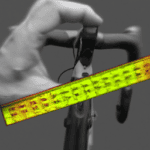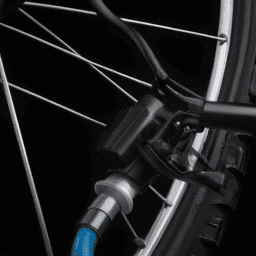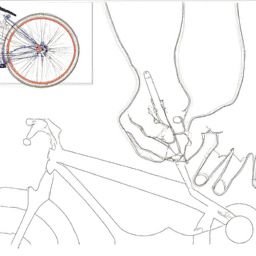Anyone who has ever cycled on a bike that was either oversized or undersized understands the discomfort and potential hazards involved. Being an avid cyclist myself, I recognize the importance of proper bike sizing for a secure and comfortable cycling experience. Indeed, the disparity between a bike that fits well and one that doesn’t can transform a delightful journey into an excruciating ordeal.
That’s why I’m writing this article to explain how a bicycle is measured and what factors you should consider when choosing the right size for you.
Measuring a bike may seem like a simple task, but it’s actually quite complex. There are so many factors to consider, from the type of bike frame to the rider’s height, weight, and inseam. In this article, I’ll break down the different types of bike frames and the tools and techniques used to measure them accurately.
I’ll also discuss how to adjust and maintain your bike size to ensure a comfortable and safe ride. So, whether you’re a seasoned cyclist or a beginner, this article will provide you with all the information you need to choose the right size bike for you.
Key Takeaways
- Measuring a bike is complex and involves many factors, including height, inseam, and riding style.
- Factors affecting bike geometry include body position and intended use.
- Frame materials, such as aluminum, carbon, and steel, have different characteristics that should be considered when choosing a bike.
- Adjusting and maintaining bike size, including saddle height, handlebar height and reach, and frame size and geometry, is crucial for a comfortable and enjoyable ride.
Importance of Proper Bike Size
It’s crucial to get the right size bike so you can ride comfortably and efficiently, without feeling cramped or stretched out. One of the common mistakes that people make when selecting a bike is choosing one solely based on its appearance or price. However, this can lead to a poor fit and cause discomfort or even injury while riding.
That’s why it’s important to take the time to find the right size bike that suits your body type and riding style. The benefits of custom fitting a bike are numerous. Not only does it ensure a comfortable ride, but it also maximizes your power and efficiency, allowing you to ride longer and faster.
Additionally, a proper fit can improve your handling and control of the bike, which is particularly important in more technical or challenging terrain. So, before you hit the road, take the time to get your bike properly fitted to enjoy all the benefits it has to offer.
Moving on to factors to consider when measuring a bike, …
Factors to Consider When Measuring a Bike
When you’re sizing up a bike, you’ll want to take into account your height, inseam, and riding style to ensure a comfortable fit. Body position and riding style are crucial in determining the right bike size for you. For example, if you’re planning on using your bike for long-distance touring, you’ll want a more relaxed posture, which means a taller head tube and shorter top tube. On the other hand, if you plan on racing, you’ll want a more aggressive posture, which means a shorter head tube and longer top tube.
Terrain and intended use are also essential factors to consider when measuring a bike. The type of terrain you plan on riding on will affect the bike’s geometry. For example, if you plan on mountain biking, you’ll want a bike with a more upright riding position, which means a higher handlebar and a shorter top tube. If you’re planning on using your bike for commuting, you’ll want a more relaxed riding position, which means a higher handlebar and a longer top tube. Taking all of these factors into account will ensure that you choose the right bike size for your needs and preferences.
When considering the types of bike frames, it’s essential to keep in mind the factors we’ve discussed, such as body position, riding style, terrain, and intended use. The frame material, geometry, and components will all play a role in determining the right bike for you.
Types of Bike Frames
Explore different types of bike frames to find one that suits your riding style and preferences. One of the most common materials used for bike frames is aluminum. This lightweight material makes for a fast and nimble ride, perfect for road biking or racing. However, it can be a bit stiff and unforgiving, which may not be ideal for longer rides or rougher terrain.
Another popular material for bike frames is carbon. Carbon frames are even lighter than aluminum and provide a smoother ride due to their vibration-dampening properties. They are often used for high-end road bikes and provide an aerodynamic advantage. On the other hand, carbon frames can be more expensive and less durable than other materials, which may not be practical for everyday use.
Alternatively, steel frames offer a more comfortable ride with their ability to absorb shock and vibrations. They also tend to be more affordable and durable than carbon or aluminum frames.
When it comes to finding the right bike frame, it’s important to consider your riding style, budget, and personal preferences. Once you’ve chosen the frame that’s right for you, it’s time to measure your bike accurately using the proper tools and techniques.
Tools and Techniques for Accurate Measurement
Measuring your ride accurately can be a breeze with the right tools and techniques, so don’t hesitate to invest in a good tape measure and level. Calibration tips are important to keep in mind when measuring, as even a slight variation in the tool’s accuracy can result in an incorrect measurement. To ensure that your measurements are correct, it’s recommended to check the tape measure against a known standard, such as a ruler or yardstick, before use. Additionally, it’s important to keep the tape measure straight and taut to avoid any sagging or bending that could throw off the measurement.
Measuring angles is also an important part of accurately measuring a bike frame. To do this, a protractor or angle finder can be used. These tools allow you to measure the angle of the seat tube, head tube, and other important parts of the frame. To ensure accuracy, it’s important to hold the tool steady and level when taking the measurement. With these tools and techniques, you can confidently measure your bike frame and make any necessary adjustments to ensure a comfortable and efficient ride. In the next section, we’ll discuss how to adjust and maintain your bike size to further optimize your ride.
Adjusting and Maintaining Bike Size
Maintaining the proper size and fit of your bike is crucial for a comfortable and enjoyable ride, and making adjustments can be easy with the right tools and knowledge. Here are some important tips for adjusting and maintaining bike size:
- Always ensure that the saddle height is appropriate for your leg length, as too high or low can cause discomfort and affect pedaling efficiency.
- Check that the handlebar height and reach are comfortable for your riding style and body dimensions, as different positions can affect your posture and control over the bike.
- Pay attention to the frame size and geometry, as different models and manufacturers have varying designs that can affect the overall fit and handling of the bike.
Don’t fall for common misconceptions about bike sizing, such as thinking that bigger is always better or that you can simply adjust everything to fit you perfectly. Every person is unique and may require different adjustments and components to achieve the best fit.
If you encounter any issues with your bike’s size or fit, don’t hesitate to troubleshoot and seek professional advice if needed. Small changes can make a big difference in your riding experience, so take the time to adjust and maintain your bike properly.
Frequently Asked Questions
What is the average lifespan of a bicycle?
As an avid cyclist, I can say that the average lifespan of a bicycle depends on the level of maintenance. Common issues include worn-out tires, rusty chains, and loose bolts. Regular maintenance can extend the lifespan significantly.
How do I know if I need a new bike rather than just adjusting the size of my current one?
To determine if I need a new bike or just an adjustment, I inspect for signs of wear and tear such as rusted parts, worn tires, and frayed cables. I also consider upgrading options and desired features before deciding.
What is the difference between a road bike and a mountain bike?
When choosing the right bike for your riding style, it’s important to consider the pros and cons of road vs mountain bikes. Road bikes are designed for speed and efficiency on smooth surfaces, while mountain bikes are built for rough terrain and versatility.
Can a bike be too small or too big for a rider, and how does that affect their performance?
As a cyclist, I’ve learned that bike sizing criteria is crucial for optimal performance. Riding a bike that’s too small or too big can lead to discomfort, pain, and decreased efficiency. Proper bike fit is essential for a smooth and enjoyable ride.
How often should I have my bike professionally measured and adjusted?
To ensure optimal performance, I recommend having a professional bike fitting every 1-2 years or when experiencing discomfort. However, regular DIY adjustments can also provide benefits. Seek professional help for major changes or if experiencing persistent issues.
Conclusion
Well, after diving deep into the world of bike measurement, I’ve come to the conclusion that it’s a truly complex and nuanced process.
The importance of proper bike size cannot be overstated – not only for comfort and efficiency but also for safety.
And let me tell you, there are a lot of factors to consider when measuring a bike.
First off, you need to take into account the type of bike frame – whether it’s a road bike, mountain bike, or something in between.
Then there are all sorts of tools and techniques for accurate measurement, from measuring tape to digital calipers.
And let’s not forget about the ongoing maintenance and adjustments needed to keep your bike size just right.
All in all, measuring a bike is no simple task.
But fear not, fellow cyclists! With a little patience and practice, you too can measure your bike like a pro.
So go forth, armed with the knowledge of proper bike sizing, and pedal on to your heart’s content.
Just remember, a well-measured bike is a happy bike.
